
The early pioneers of agriculture in Australia were primarily immigrants from England who saw Australia as a new opportunity to move and start a new life for their families. The following pioneers were involved in agriculture in Australia and eventually Stranraer, Kangaroo Island. There was not only the move to another country to contend with but the challenges of drought, depression and world wars also impacted on agriculture. The following descendants commenced farming in the mid north of South Australia in an area known as Hydon, Redhill in the 1870s and the difficulty of drought in that particular year was followed by floods in 1871. This must have been a difficult commencement to farming in the mid north, however the family have lived there for over 100 years.

John Wheaton (father of Frederick) was born on 14/12/1819 and married Ann Carter on 03/04/1848.
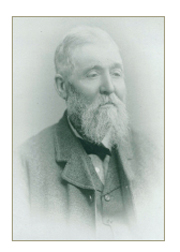
John and Ann made their home at the Chain of Ponds in the Adelaide Hills; the Certificate of Title for Section 6087 was signed in February, 1865. The sections contained approximately 80 acres each. John was elected Councillor for the District of Para Wirra in July, 1867 and retired by ballot the following year.
In the 1860s land in the mid-north of the state of South Australia, which had been previously leased for grazing purposes, was made available for selection. John Wheaton made his way north and selected 308 acres in the Broughton Agricultural Area No. 4.
On the 16th April 1870, John Wheaton arrived at Redhill towards dusk. The 308 acres plus another 77 acres was to form the nucleus of the property named Hydon and where, for 111 years, the Wheaton family lived. There was no harvest in 1870 as it was a year of drought. 1871 was known as the year of the big flood as the flood waters extended from the River Broughton to Snowtown and across the mid north of South Australia. This caused many issues especially travel to nearby Clare for services.
Frederick Wheaton is noted as arriving in the Redhill district in 1872, from Chain of Ponds in the Adelaide Hills, where the family originated, until John had completed a dwelling at Hydon to house the family.
Additional land was acquired for their three sons to farm. Ann Carter passed away on 25th November 1881 and John continued to farm at Hydon with his daughter Mary.
Wheat had always been grown at Hydon and with the advent of superphosphate about the turn of the century, yields increased. The first eighteen bushel crop was harvested in 1902.
John took a journey in 1905 to Dubbo, New South Wales to see his son John Jnr and his family. Certainly, a long trip for a man of 85 years, during which John unfortunately fell from a horse-drawn vehicle, breaking his hip.
He passed away on 15th May 1905 and is buried in the Dubbo Cemetery.
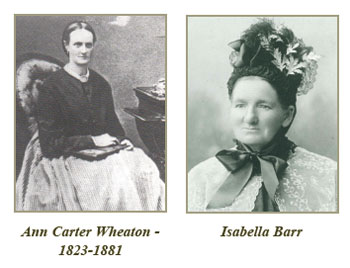
Isabella Barr (Willson), born at Parkhead, Lanarkshire, Scotland on March 26th, 1835, married Robert Barr on October 20th, 1854. Mother of Janet Howard (Barr) arrived in South Australia on SS St. Vincent on November 5th, 1874, died May 1st, 1907, buried in Penneshaw, Kangaroo Island Cemetery. Grandmother of Mary Wheaton (nee Howard).
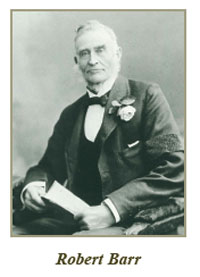
Robert Barr, born at Westlinbank, Lanarkshire, Scotland on December 1st, 1832, married Isabella Willson on October 20th, 1854, father of Janet Howard (Barr). Grandfather to Mary, arrived in South Australia on SS St. Vincent on November 5th, 1874, died April 23rd, 1927, buried at Magill cemetery, Adelaide South Australia.
William & Janet Howard (nee Barr) parents of Mary Matilda Wheaton
Golden Wedding Anniversary - September 23rd 1930

Janet was born in Scotland and was a relatively late arrival into the colony. The eldest daughter of Robert and Isabella Barr, she spent her childhood on a farm 15 miles from Glasgow, until her father decided that the family would immigrate to Australia in 1874. This took some courage at the time with ten children. Janet’s family moved to a property, Alma, near the mid north town of Balaklava, to begin their new life.
William and Janet were married on September 23rd 1880, Janet was 21 and William 28. After their marriage William and Janet took up land in the mid north of South Australia. Janet’s father, Robert Barr, had found farming very challenging compared to what he was used to back home in Scotland. The land was primitive and harsh. Droughts were bad and in those days there was no superphosphate. Even their best crops had only yielded 4.5 bushels per acre. It took time to grow used to the new conditions in Australia and the Barr family had found their first few years in Australia at Alma an uphill struggle. So much so, that when their daughter and new husband left for land further west they were prepared to try their luck elsewhere as well.

Hearing of land on Kangaroo Island, William decided to settle instead on a place called Hog Bay where the town Penneshaw had recently been proclaimed and where the land was reputed to be some of the best on the island, capable of growing crops of barley. William decided to set sail for Kangaroo Island without Janet, due to the arrival of their son Andrew Lindsay. William named his new property Balaklava which was where he had just been farming. Janet joined William six weeks later with two young boys. The new property, Balaklava, was four miles from Penneshaw and when Janet arrived at Penneshaw with her family she walked the four miles to begin her new life at Balaklava.
Janet gave birth to Mary Matilda in 1884, her first child to be born on Kangaroo Island.
Robert Barr took up the opportunity to purchase land on the Dudley Peninsula. Janet was excited about the prospect of having her parents close to her, rather than the mid north near Balaklava. Robert called his new property South Coast. Janet’s mother, Isabella, having ten children of her own, was to become invaluable as the local midwife.
At this time William Howard decided to move to Cuttlefish Bay where he had purchased a section of land.

Frederick & Mary Agnes Wheaton - Parents of Robert Wheaton.
In 1872 Frederick moved from Kersbrook to Redhill in the mid north of South Australia to commence farming. Frederick and Mary married and farmed in the Redhill district at a property known as Baroota. By 1984 Frederick and his family had moved to a property named Drymma near Redhill and Frederick was also working at Hydon in conjunction with his brother George. Frederick was involved in the Collinsfield Methodist Church and was also a member of the Agricultural Bureau for the district and was awarded life membership in 1912. Frederick was supported in the community by Agnes and they celebrated their Golden Wedding Anniversary in 1932 at Drymma. Frederick passed away in 1933 and Agnes in 1937. Farming provided many challenges, especially the occurrence of failed crops due to drought and personal loss.

Robert & Mary Wheaton 1935. Robert is the son of Frederick and moved to Kangaroo Island in 1907 to manage a family property however, he never intended to stay but Robert married Mary Howard in 1910 and farmed on Kangaroo Island for the remainder of his life. Robert and Mary farmed at Stranraer from 1910, the following is part of the history prior to Stranraer.
Parts of Kangaroo Island were open for pastoral lease in the late 1880s. B & H Taylor had a large area of land taking in land in the Hundred of MacGillivray and Haines extending down to Vivonne Bay.
A Hundred is English terminology, referring to a surveyed section of land. In other areas of Australia a section of land is often known as a ‘shire’ and these form council areas. Kangaroo Island has 12 Hundreds, with MacGillivray been one of the largest.
The Taylor family took up the lease in 1882 and were involved in bringing some 20,000 sheep to Kangaroo Island. This scheme did not work at the time and the lease was cancelled on 13/10/1887.
The old cottage near the hummocks, which is a ruin now, was built by the Taylor family when the lease was operational by them, in the late 1800’s.
Charlie Price took up the lease on the 01/01/1890. The area was 16000 acres and the lease payment was 8 pounds per square mile. The Price family designed the first house plan for the property.
A.C. Burgess took over the lease on 01/07/1896. During 1895 the area was surveyed and the Hundred of MacGillivray was formed. A.C. Burgess was able to retain part of his lease hold which consisted of an area of 3200 acres and became Section 2 MacGillivray.
This section of land originally was called Adavale, which is Stranraer today, this is the early discussion on Adavale in the early 1900’s. The discussion below is from the Courier newspaper dated June 25th 1910
Mr and Mrs Burgess raised ten children at Adavale, none of whom required a doctor’s care.
The property of 3200 acres, when owned by A.C. Burgess, was known as Adavale.
1 hectare is 2.47 acres in today’s metric measurements, thus 3200 acres is 1295 hectares.
The homestead at Adavale is situated on rising ground, and from there a good view of the estate (which comprises 3200 acres of freehold) can be obtained. To the left there is a serried line of curiously formed hummocks which, like the ramparts of a fort looking out to sea, stand guard over White Lagoon - a sheet of salt water - while in front is a long stretch of cleared country - over a good tract of land on which green shoots were already making their way above the cultivated areas. This year Mr Burgess is putting in 150 acres of wheat (principally of the Gallant’s Hybrid and Federation varieties) barley and oats. Mr Burgess by the way has always secured top price for his wheat and has sown that cereal every year since he first ‘pitched camp’ at Adavale.
A wander through the garden revealed where cauliflowers, carrots, turnips, tomatoes and other vegetables were showing vigorous growth. The first paddock of 90 acres was comprised of alluvial flats principally. Continuing in a south to south westerly course from the house, a 30 acre paddock was passed through. This paddock was under melilotus (a legume plant). Mr Burgess stated the melilotus would be up to the height of a man’s waist. It is in this month that Adavale would be at it’s best, although the property carries fair feed all year round. This paddock gave Mr Burgess a return of 4 tonnes of hay to the acre 5 years ago. It might be mentioned here that the owner of Adavale not only grows his own horse-feed but disposes of quantities of hay by giving it to his neighbours.
A fine cultivated paddock of 100 acres (now under stubble) was next transversed and in passing over it, even a novice could perceive the ease with which the land could be worked, and the facilities offered to farming implements of all descriptions, to get over the ground smoothly. On portions of this, potatoes were grown last year at the rate of 8 tons per acre.
Retracing our steps Mr Burgess, on the return journey, referred to an article he had seen recently, with reference to seaweed as a fertiliser. He stated that he had tried experiments with seaweed and had met with success. Seeing that (as we were informed) there were hundreds of thousands of tones of seaweed on the beach within 7 miles of White Lagoon (D’Estrees Bay) there should be great possibilities lying in the direction of an intensive and cheap system of agriculture on this part of the Island, and certainly on Adavale alone there is room for a number of families.
Another stage of the trip was negotiated and White Lagoon Park (now Rush Lagoon), a 260 acre section of Adavale worked by one of Mr Burgess’s sons, was inspected. At the park, 70 bushels of oats per acre and 30 of barley were taken off last year. Here, as on other portions of the estate, there is an abundance of fresh water. Rush lagoon is a valuable asset in this respect.
Sixteen years ago Mr Burgess held 16,000 acres, but, when the lease reverted to the Crown, he secured 3200 acres as freehold. The country was previously held by Mr Price. Mr Burgess started operations with a set plough, two horses, one spreader and 600 sheep. From the first years cultivation he secured from 25 to 30 bushels per acre.
A bushel was originally a measure of capacity of grain. 1 bushel of wheat = 60 pounds (lbs)
1 pound = .454kg, 36.74 bushels of wheat = 1 metric ton, 1 bushel of wheat will make 73 loaves of bread.
The conversion into kilograms is 1 bushel = 27.24 kg.
60 bushels of wheat per acre = 1.63 tonnes per acre, which is 4.03 tonnes per hectare of wheat
1 bushel of barley = 48 pounds (lbs)
Most agricultural grain yield measurements today are kilograms per hectare.
The second year he again cultivated, still using a set plough. Without manure he realised from 25 to 30 bushels per acre. In fact, for the first 6 years he did not use manure. About the seventh year he started on fertilisers. He informed us that he had grown up to 70 bushels of oats per acre, up to 60 bushels of wheat (on fallow land) per acre and up to 40 bushels of barley. He has gone in considerably for the sowing of yorkshire fog, cocksfoot and ryegrasses which should greatly extend the carrying capacity of the property. About 1000 sheep are now running on Adavale and 20 head of horses.
The Taylor family operated the land known as Stranraer back in the 1870s. 20,000 sheep were brought to the island and were run on MacGillivray country and also on land on the western end of the island. A large percentage of these sheep suffered ‘Coastal Disease’ and died. This copper and cobalt deficiency issue was to become very important to sheep management on Kangaroo Island. These sheep were shipped to the island in small boats. Mount Taylor on the western end of Kangaroo Island is named after the pioneering efforts of the Taylor family back in the 1870s.

Robert Wheaton was born at Collinsfield on January 3rd, 1886 and his early years and schooling were in the Redhill district, which is in the mid north of South Australia.
He attended Roseworthy College from 1903 to 1906 and gained his Diploma of Agriculture.
In 1907, Robert went to Kangaroo Island to manage the property named Kiowie near the Salt Lake. On the island he met Mary Howard, who lived with her family on a farm near Cuttlefish Bay which is near Penneshaw.
Robert and Mary were married on January 27th, 1910 in the Penneshaw Methodist Church and made their first home at Kiowie.
The following year they purchased a property in the Hundred of MacGillivray and Stranraer became their home for the next 40 years. It was there that their five children were born. A house, ‘Wattle Grove,’ on their farm was used by the education department for a school and a room 12’ x 12’ became the church where families of the district shared alternate Methodist and Church of England Services.
MacGillivray was a community extending to over ten families and the bonds of friendship have continued through life and on to the following generations. Visits between neighbours were always welcome with a sharing of the farm and garden products, flowers and plants.
Robert’s knowledge of veterinary practices was often in demand and when a neighbour came for help with a sick animal, the two would ride off on horseback with the necessary medicine.
It was 1924 when Robert bought his first car, a Rugby and the coming of new transport brought many changes to the farms, eighteen miles from Kingscote, the nearest town.
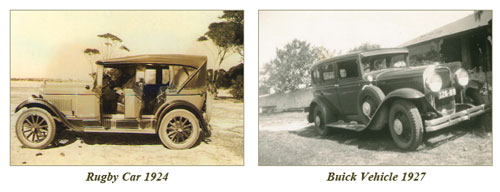
Keenly interested in local affairs and matters for the promotion of Kangaroo Island, Robert was elected to the Kingscote District Council in 1913. He served for a total of twenty six years and was Chairman for twelve years. Robert’s many interests included the establishment of the nursing home and later a hospital in Kingscote, the Kangaroo Island Agricultural and Horticultural Show and the making of the show grounds, also the development of the Soldiers Memorial Park and he was a founding member of the MacGillivray Agricultural Bureau in 1911.
Robert was Secretary of the Methodist Church Trust for over thirty years and was Circuit Steward for thirty years. Keen on sport, he played cricket and football and later was Chairman of the Kingscote Bowling Club and supervised the establishing of the rinks and club house. He was Justice of the Peace for more than thirty years.
At MacGillivray, Mr Wheaton was instrumental in the clearing of land and setting out an oval and cricket pitch there, as discussed in chapter 9.
In all these activities Robert was ably supported by Mary, who also had her own interests in the Country Women’s Association, Methodist Ladies Guild, Kingscote Show and Ladies Bowling Club, Red Cross and Forces Comfort Funds.
In 1950 Robert and Mary moved to live in Kingscote, where their home became ‘open house’ for their family and friends from the farms.
In 1958 Robert was awarded the O.B.E. in recognition of his services to the community. This is accepted as an award for the people of Kangaroo Island and their pioneering efforts.
Robert and Mary celebrated their 60th Wedding Anniversary in 1970.
Robert died on August 21st, 1974 aged 88 years.
October 22nd, 1984 was Mary’s 100th birthday. It was a special day for the people of Kangaroo Island, as she had lived there all her life. She was honoured as a beloved citizen.
Mary died on September 11th, 1987 just before her 103rd birthday.
Robert and Mary are buried in the Kingscote Cemetery.
Robert Wheaton’s service to the local community through the council resulted in an O.B.E. being presented to him for service to the community. The years of service totalled 27 years.
1912-16, 1919-23, 1925-36, 1939-47 From 1921-23, 1926-34, 1939-41, 1946-47 Robert Wheaton served the council as Chairman/Mayor . Robert’s son Eric served as Chairman/Mayor from 1966-69. During the period of the Great Depression (1930) there was farming pressure due to low commodity prices and high prices for farming inputs such as fertilisers. At this point in time land owners found it difficult to pay rates and the council were able to manage this situation and provide ‘sympathy’ during this difficult time. In these early years the development of roads, agricultural industry, medical services and sea transport dominated the council minutes.
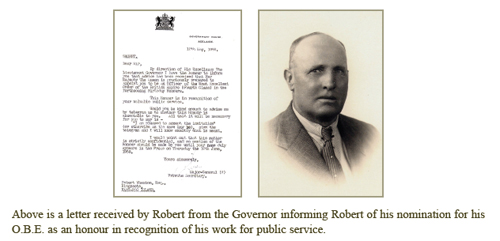
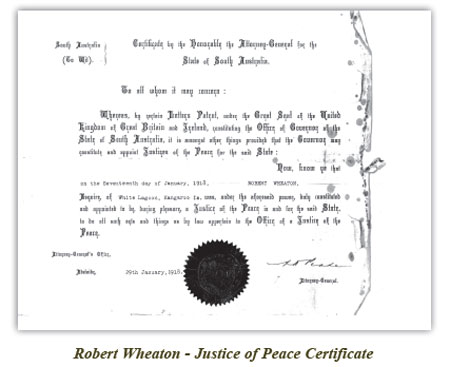
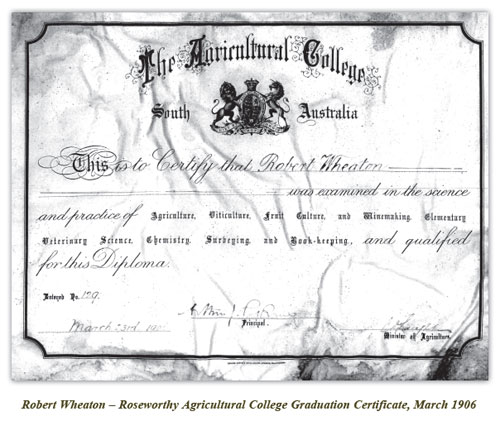
Councillor Wheaton (extract from People, Places and Serious Business by D.G. Kelly)
On 30th June 1947, Councillor Wheaton announced that he would not seek re-election to the council. It was 34 years since he first contested a council seat and in that time he had served for 26 years. In his retirement speech he referred to the changes he had seen and in particular to the vast amount of voluntary work done by the ratepayers. Coming to Kangaroo Island in 1910, it wasn’t long before Robert Wheaton became interested in more than his farm, and as he lived some 18 miles from the one and only town, the time and discomfort involved in travelling to and fro was a concern to him. He offered to cart stone to form seventeen chains of road, free of charge, if the council would form it. It took eight or nine three-horse dray loads per chain and he carted one hundred and forty loads, but he ended up with a serviceable road over a bog and sandhill for his efforts. When he was able to get more roads done, he wasn’t quite so generous, but he still provided the dray and the team, the horse feed and the stones. Of course, he was not alone in those days of self-help with instances abounding where the land owner, with a degree of self-interest, made substantial contributions for the common good.
His energies were not confined to council business only, he served on any project likely to make his adopted home a better place. It is not surprising to see it recorded that in one evening he chaired five separate meetings, surely the best possible incentive for the generation of clarity of thought and brevity of speech.
His period of service covered two wars, a depression, times of hope and times of sorrow, his sound sense often providing an anchor for the community.
Some years after his retirement he was presented with the long service certificate awarded by the Minister of Local Government and in 1957 the community was honoured when he, as one of its own, was awarded the Order of the British Empire.
The children of the district attended the Wattle Grove School, later Wattle Grange School, with one teacher for the eight to ten pupils in Grades 1-7.
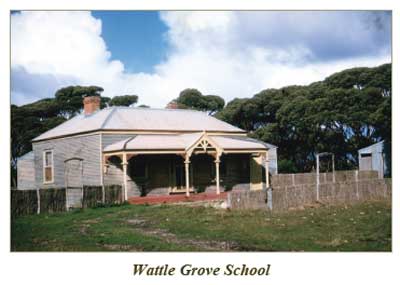
Wattle Grove school which is located at the northern end of the property. The school operated in the early 1900s for the community, which schooled 20-30 children of MacGillivray.
Robert and Mary realised the need for further education beyond Grade 7 and made arrangements for the children to attend schools in Adelaide. Howard, Eric and Doug attended Norwood High School in Adelaide while boarding with Mary’s parents William and Janet Howard. Howard and Eric later studied at Roseworthy, as Robert had done from 1903 to 1906, and all received their Diplomas of Agriculture. Farming became the occupation of three brothers on Kangaroo Island.
All were keen sportsmen and were members of island football teams and cricket teams and they also worked on projects for the progress of the community.
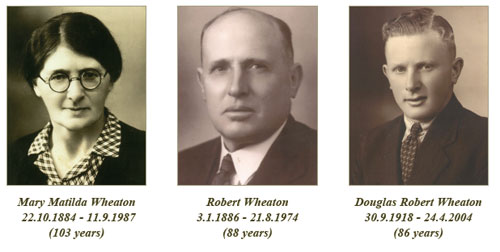
When Robert and Mary retired to Kingscote, Doug continued to farm at Stranraer. He maintained his interest in sport and was manager of the Kangaroo Island cricket carnivals for many years. Doug was always involved in the Kingscote Show Society, had been a member of the committee and served two terms as president.
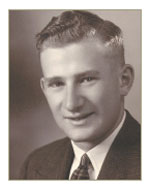
Eric Lancelot Wheaton- 24.6.1916 - 18.6.1992 (76 years)
Eric farmed at Redbank’s near American River for thirty years, where his family continue to farm today.
Eric served as a councillor in the Kingscote District Council.
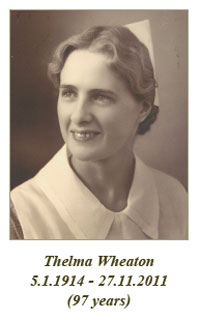
Thelma attended Ellerslie College at Magill, Adelaide in 1927 and 1928 and after six years on the farm, trained as a Nurse at the Adelaide Hospital from 1936 to 1939. Thelma was involved in the Women’s Conference Work at State and Federal Levels whilst raising a family.
MacGillivray, Kangaroo Island in the 1920s written by Thelma Wheaton.
As a child growing up in MacGillivray in the early 1920s, my memories are of a community who were neighbours in the true sense of the word. In those times of sickness, need, problems, or accidents at any time, there was always someone ready to come alongside and lend a hand. Each year in February, after harvest was completed north of Adelaide, my paternal grandparents Frederick and Mary Wheaton, from Redhill, came and stayed with us for at least a month. During their stay a visit was paid to all the neighbours in MacGillivray.
The Post Office was on the northern side of Rush Lagoon. Mail was collected weekly on a Thursday in a sugar bag and when we arrived home the contents would be tipped out onto the kitchen table; a great collection of newspapers, magazines, letters and of course the local paper, ‘The Kangaroo Island Courier.’
The coming of the motorcar bought great changes to us all in MacGillivray in 1924. Instead of taking two hours to drive the horses, it now took us only one hour to drive to Kingscote. My brother knew all the cars by the tread of the tyres, so if anyone came to Stranraer while we were out, the detectives were on hands and knees tracking them down.
A friend of my brother, Howard, bought a crystal wireless set when he came on holiday. We watched him erect the aerial, a slat of timber with wire attached, was attached to the top of one of the pine trees. We were all amazed at the result from the tiny set in the bedroom and would line up for turns to listen on the earphones to the voices and music all the way from Adelaide. Radio, electricity, telephone, bitumen roads, television, plane flights to Adelaide and across the world; these and many more incredible marvels were in the future for us all, but we would always be thankful for our experience of life on the farms and the personal benefits gained by being part of the rural community of MacGillivray.
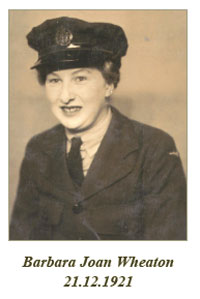
Barbara was a student at the Methodist Ladies College at Wayville in Adelaide and after some years helping on the farm, joined the Women’s Auxiliary Air Force (WAAAFS) from 1942 to 1945. She was married after the war to a 2nd A.I.F. serviceman. Barbara lived in NSW and then with their family, at Kingscote, Kangaroo Island. Barbara now resides in southern Adelaide.
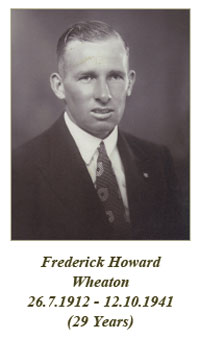
Howard was the eldest son of Robert and Mary and had a great passion for agriculture. In reading information about Howard and in discussion with his sister Barb, Howard had a real presence and provided great support to his brothers and sisters. Howard was heavily involved in the early development of Stranraer and Redbank’s prior to WW2.
Howard was involved in the Methodist Church as a lay preacher and enjoyed his quiet times with the family. Football and cricket were also his great interests during his weekend breaks.
On 15 September 1939, it was announced that Australia would send troops to war. Australia sent Royal Australian Navy, Air Force and Army members to help the allies fight in Europe, North Africa and the Middle East. By February 1940, Australian forces were fighting against Italian troops in Palestine. They also fought in Crete, Greece, Lebanon, Syria and other parts of North Africa.
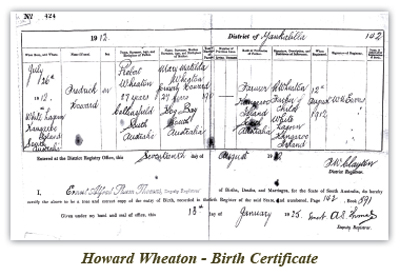
When the Australian army defended the Libyan seaport of Tobruk against 1,000 bombing raids, the Germans grudgingly acknowledged their own bravery by dubbing them the ‘Rats of Tobruk.’ After a German and Allied battle in El Alamein in Egypt, in 1943, the Germans were defeated in North Africa. 832 Australians died in the siege of Tobruk and there were 3,009 casualties and 941 taken prisoner.
In June 1940, Howard enlisted in the 2nd A.I.F. and at camp at Woodside became a Diesel Mechanic and Transport Driver in the 2nd/8th Field Ambulance. Leaving Australia in December 1940, the unit spent some time in Palestine before going to North Africa, where they became known as the ‘Rats of Tobruk.’ On October 11th 1941, Howard was one of two men who volunteered to take a laden transport vehicle by barge down the coast and then drive to Alexandria. They left Tobruk at night, under the cover of darkness, because of enemy action in the area, but were not heard from again and were reported lost at sea on October 12th 1941.
Howard enlisted in the late 1930s and with his diesel mechanic qualifications would become an integral part of his battalion.
Howard was a very active sports person prior to his departure from Kangaroo Island to Tobruk in 1941. Both, a cricketer and a footballer. The development of the MacGillivray Cricket Club is a legacy he has left behind which the community benefits from today. The loss of Howard in 1941 was devastating for the family.
Howard attended Roseworthy College to study agriculture and then turned his skills to becoming a diesel mechanic. This diesel mechanic trade was to assist in World War 2, where Howard lost his life in Tobruk.
Howard had a passion for farming and on his return to Australia would have returned to this passion and contributed to the local community as he did prior to his departure for Tobruk, in World War 2.
It wasn’t until I was older that I was able to comprehend and understand the sacrifice Howard made, to provide Australians with the way of life we have today.
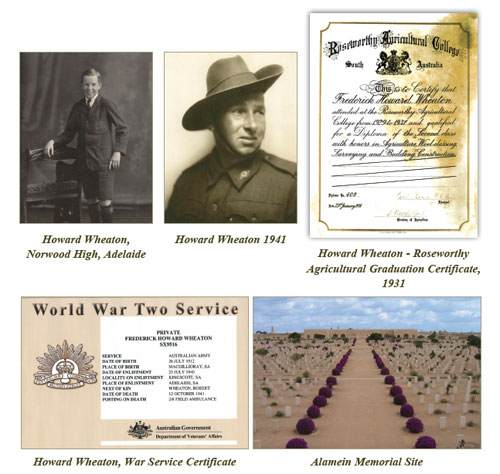

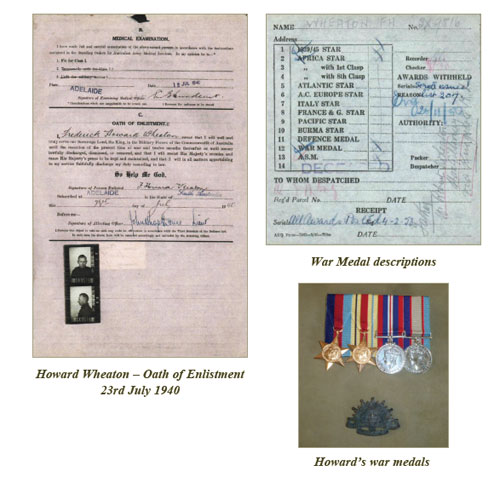
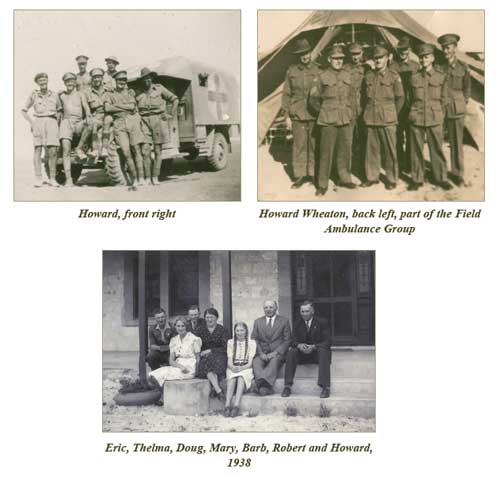
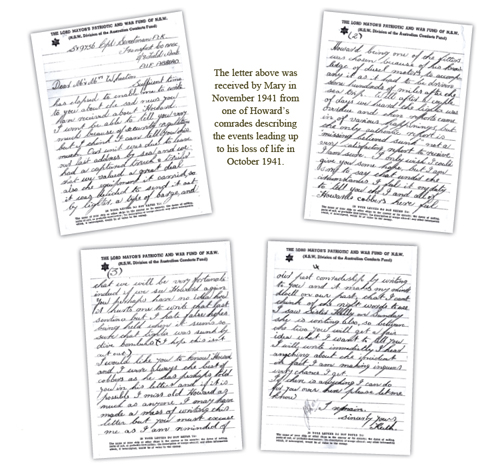
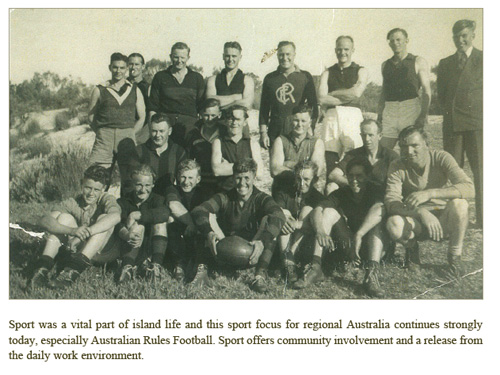

Fifty years on Kangaroo Island 1910-1960, By Robert Wheaton.
A talk given by Robert Wheaton at Kingscote Literary Society in October 1961.
About 1905, my father, Frederick Wheaton, visited the island and purchased some land in the Hundred of Haines on the border of the District Councils of Dudley and Kingscote. It was only natural that I should come to the island in 1907 to see the land, although, at the time it was not intended that I should become a resident of the island.
My first voyage was on the coastal steamship Ceres, a small boat making the midweek trip to the island, while the S.S. Kooringa, a bigger ship, made the trip at weekends. It was not a particularly rough day, but the Captain put the sails up to steady the ship and no doubt help in the sailing. I have never seen this done since.
At the time of my arrival, Kingscote seemed a prosperous sort of township, no doubt due to the land boom at the time. The S.S. Karatta brought the mail to the Post Office down at the jetty, and people went down on Saturday nights and waited for the mail to be sorted, and the Post Office opened. It seemed a long wait on a cold winter’s night.
Schools were at Kingscote, Cygnet River, Wisanger and Penneshaw, with part-time schools at other parts of Kangaroo Island. In the Dudley District for a time a teacher had three schools, spending a week at each. She had a horse and rode from one school to the next.
Scrub clearing was not easy. Rolling the scrub was done with the use of 10-12 bullocks. This was hard work as both driver and bullocks had to scramble over the rolled scrub. After the scrub was rolled the spring backs were cut and then after burning, sticks had to be picked up by hand to get the ground clear enough for ploughing. The ground would be then ploughed, farrowed and seed drilled in wheat or oats. The idea was to get enough straw to again burn the shoots but this was not often done.
Wood cutting – Alas! Not an easy job. There were hundreds of tons of wood shipped from Kangaroo Island to Adelaide. The wood was cut into 6 foot lengths, carted to the beach and then when the ketch came, was carted out on the dray to the cargo boat and taken to the ketch. Grain and wool was shipped in the same way.
Wood carting was not easy either. There are no men cutting wood now, the work is too hard, although hundreds of tons were sent away then. Only two weeks ago I was in a shop in Kingscote when a man came in and wanted an axe. He only wanted a light one as it was for his wife.
Harvesting - While I had only seen strippers or harvesters on the wheat land in the lower north, a lot of hand reaping had been done on the island. Men used to come over from Rapid Bay for the job. One day I saw a man, hand reaping so I went over to him while he was having lunch. I said, “Now can I see you cut a sheaf.” So he set to it in good style. The crop was short and he cut the straw as long as he could and when enough for a sheaf, he pulled up two handfuls of roots and joined them all together to make a band. Then he tied up his sheaf by twisting it and went on to cut another. This would then be carted to the threshing floor, a circular area of ground perhaps 30 feet across. The grain was either trodden out with horses or by a roller smaller at one end than at the other. The small end had a fixture and a horse on the big end would go around in a circle. Threshing machines were just coming in when crops were cut with a binder, carted and stacked and then put through the thresher.
Household - With the great improvements on the land the houses have not been altogether overlooked. From the kerosene lamps that had to be filled and cleaned every day, candles made in winter time, up through the stages to electric lights, power on the farm with 32 volt lights where town supply is not available and to drive the cake mixer, washing machine and carpet sweeper to nowadays when cows are milked by machines and with motorcars to dive about in, it must make the women shudder at what had to be done years ago.
Industries
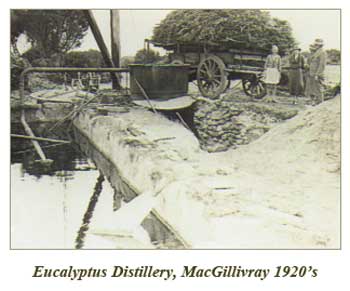
Oilmaking - Many farmers had a still. The old type was a 400 gallon tank used as a boiler with wood used for heating. The top of the tank was cut out to form a lid with the pipe outlet, to convey steam to the condenser. The tank was filled about 1/3 with water, then the leaf boughs about two feet long, cut and stacked in the still. The lid clamped down and the fire started up. When the water boiled, the steam, also carrying the oil, escaped out of the pipe in the top and was conveyed to the condenser - either a coil or pipes in a trough. The steam condensed and with the oil ran into a 10 gallon drum with a pipe from near the bottom taken outside near top. This ran the water off and the oil, floating on top, was tipped out. Improvements have now been made and a 1000 gallon boiler used instead of a tank with a winch erected to lift the cooked leaf out of the frame. Oil making, although not very profitable, was a means for farmers to secure a little ready cash. There is not much oil made now.
The MacGillivray area was renowned for eucalyptus distilling, with over 48 distilleries in operation. In the early days, roadside collection of the eucalyptus cneorifolia, commonly known as the Kangaroo Island mallee or narrow leaf was permitted by council for income generation. This tree dominates the vegetation at Stranraer, especially along the eastern side of White Lagoon. These trees grow to 12 metres in height, their flowers are small and white in colour. This variety of eucalypt is ideal for oil distillery as it produces abundant oil. These oils are used in a variety of products from soaps to deodorants and the cineole can also be extracted from the oil to be used as an additive in motor fuel or as a solvent.
The young leaf is preferred as this contains the most oil. The older trees at 12 metres high have very low oil and are difficult to harvest. Even though eucalyptus is indigenous to Australia, only 5% of the world’s eucalyptus oils are made in Australia. This industry is labour intensive and the cost of producing the oil is high in Australia.
At Stranraer we have been involved in the direct seeding of eucalyptus species that are native to this area.
Yacca Gumming - This was also an old industry. Land owners might cut the gum or there were generally small gangs of gum cutters looking for gum to cut.
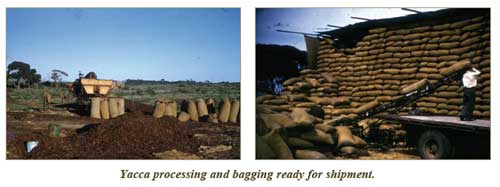
Yacca was harvested predominantly on the western end of Kangaroo Island. This provided work for large teams of men who would remove the yacca from the ground and bag it for shipment. The yacca was used for the production of varnish that was used in explosives during World War 1 and 2.
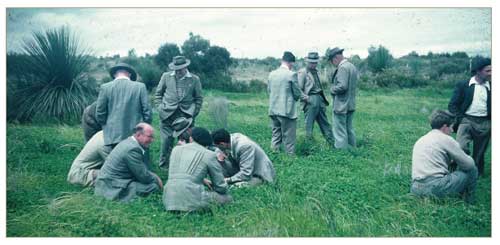
With regards to the picture above, the yacca can be seen on the top left hand side. The spines on the yacca were removed and the yacca was then dug out of the ground and bagged. Dad recalls, men who worked this task in the early days would have discussions about the fact that as it was a summer job there would be snakes often bound up in the spines on the yacca. The farmers in this picture are looking at the development of subterranean clover with the use of phosphate fertiliser.
In the land clearing of the 1920s and 1930s yaccas made it difficult for land clearance, so to have it as a saleable item for explosives provided income and work for many men.
Salt – In the early days, salt seems to have been gathered from small lakes on the island, as has been recorded by sealing boats visiting there. The big salt lake near the head of the of American River close to the south coast began in a big way in 1908, when a tramline of about 5.5 miles was put down from the lake to Muston on American River. Trucks were first pulled with horses and then an engine was used. In its heyday the S.S. Kapoola made three trips a week carrying 180 tons of salt.
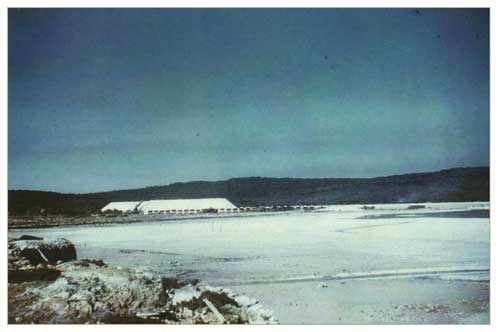
The salt was used for curing meat and skin hides.
It was estimated in 1909 that 100,000 tonnes of salt would be available for export off the island, per season. (KI Courier 23rd Oct., 1909)

Gypsum - Under the Salt Lake bed was found to be a deep bed of gypsum (six feet deep) and now the Colonial Sugar Refining Company is working the gypsum and shipping it interstate. It’s strange to say the salt company had to wash the salt to get rid of the gypsum and now the gypsum has to be washed to get rid of the salt.
Gold Mining - The gold found was of low quality and not in any significant quantity.
Coal - Found at American River in 1930. It is believed the small quantity found had been left by boat builders years previously.
Conclusion - It has been a wonderful 50 years to have lived in, to see all the changes, in all walks of life. Transport, from walking to buggy, motor car and aeroplane; from hand reaping to modern harvester; from bullocks to tractors. The greatest of all are the changes on the island. Article in ‘The Courier’
Mr Robert Wheaton, who was appointed by the Queen as an Officer of the Most Excellent Order of the British Empire in the Birthday Honours last week, has a record of service for the district that is seldom exceeded.
He was first a member of Kingscote District Council in 1913 and has, over the years, been a member for 26 years - 12 of them as chairman. No doubt what has proved to be the most valuable work for the districts was when, as chairman of the committee, he was elected to raise money for the nursing home when there were no nursing facilities at Kingscote.
The committee worked hard and when sufficient money was raised without government assistance, a building committee was appointed. On completion of the building Mr Wheaton continued as chairman of the management committee for 11 years until there was no more need for buildings and the District Council took over and made what is now the Kingscote General Hospital, subsidised by the government.
In any work undertaken for the good of the district he had been ably supported by his wife.

Mary was born at Cuttlefish Bay, Kangaroo Island on October 22nd, 1884 and had lived all her life on the island. She was the eldest daughter of the family of six girls and six boys of the late William and Janet Howard. On January 27th, 1910 Mary Howard married Robert Wheaton at Penneshaw Methodist Church. For two years they lived at ‘Kiowie’ at the Salt Lake Haines, then moved to Stranraer, MacGillivray until 1950 when they moved to Kingscote. Mary had seen many changes during her lifetime and with her late husband, was a constant worker for all the causes that would bring progress and prosperity to Kangaroo Island. The building of the Kingscote Nursing Home and later the hospital saw her leading the auxiliary.
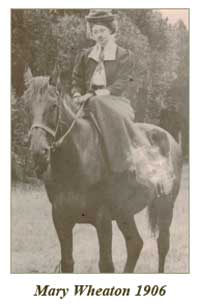
During the second World War 1940 - 1945, Mary was president of the Red Cross and worked for the Fighting Forces Comfort Fund to bring cheer to our soldiers overseas. During World War 1, four of her brothers and her brother in-law served in the armies overseas and all returned safely. Her eldest son Howard enlisted in the 2nd AIF and lost his life off Tobruk in 1941.
Mary and Robert were active members of the Methodist Church and were friends and supporters of the members and the ministers. Mary enjoyed the Women’s Guild and its works and became president.
The formation of the Country Women’s Association brought Kangaroo Island Women together in their interests and aims, crafts, catering and conferences. Mary was a president and later a life member.
Mary worked to establish the Kingscote Women’s Bowling Club, was a foundation member and had life membership conferred on her. The Kingscote Show was another great interest for Mary, enjoying the flower section the most.
Mary had many interests which also included gardening, music, sewing, crafts and cooking. She was a great letter writer and for 70 years wrote weekly letters to her parents and later to those of her family who were away from home.
In 1970, Robert and Mary celebrated their Diamond Wedding Anniversary. Robert died on August 21st, 1974, aged 88 years.
In 1980, due to failing eyesight, Mary moved to Kangaroo Island General Hospital and enjoyed the care from doctors and nurses.
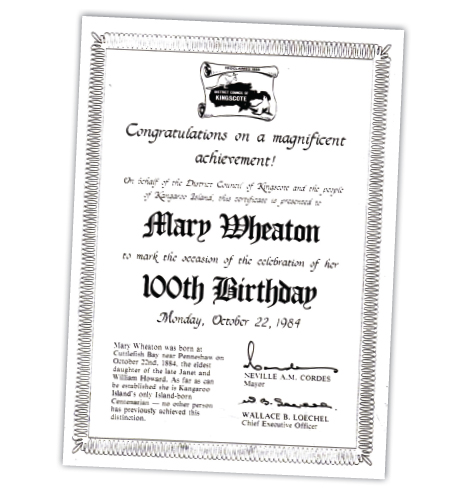
Mary celebrated her 100th birthday on October 22nd, 1984, which she thoroughly enjoyed, and it was a celebration for the whole of Kangaroo Island. Mary died on September 11th, 1987, with the funeral service conducted in the Kingscote Uniting Church.
